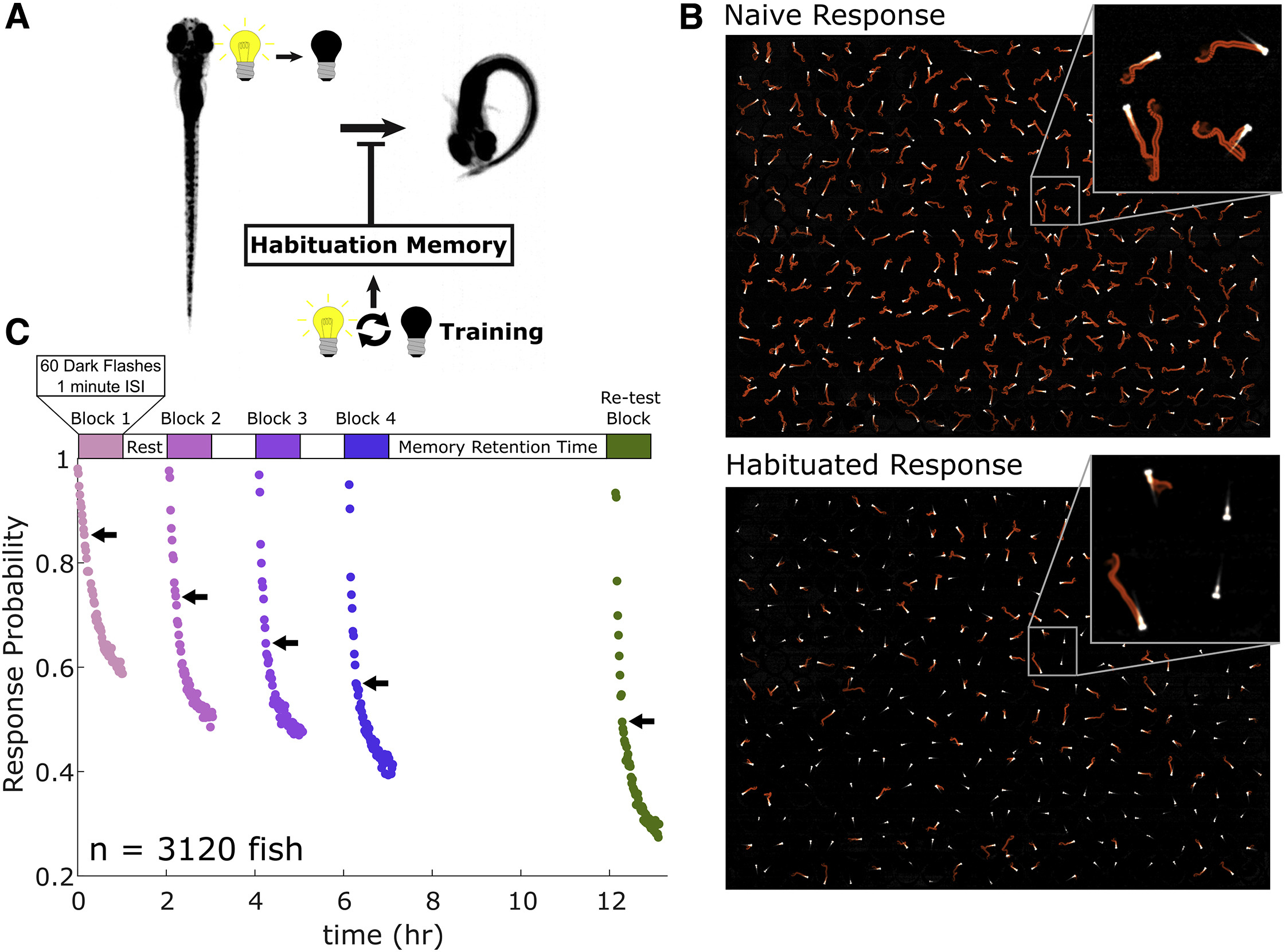Fig. 1 Habituation of the Dark-Flash Response (A) When stimulated with a dark flash, larval zebrafish execute a high-amplitude turn, which habituates with training [14]. (B) Time projection images from a 0.9-s recording of the same 300 larvae for the first flash (naive response) and the 240th flash (habituated response). Motion is visible as orange streaks in the image, tracing the path traveled by the larvae. Larvae that do not move are visible as stationary white larvae (insets). Larvae were recorded in 300-well plates, and images were background subtracted to remove the behavior plates. (C) The response probability across the population of larvae decreased both within the 60-flash training blocks and successively across the 4 blocks of training. Each dot represents the proportion of larvae that respond to each stimulus, which are delivered at 1-min interstimulus intervals (ISIs). Memory was evident at the re-test block 5 h after training, where larvae have not recovered to untrained levels (those in block 1). Arrows, 10th stimulus in each block.
Image
Figure Caption
Acknowledgments
This image is the copyrighted work of the attributed author or publisher, and
ZFIN has permission only to display this image to its users.
Additional permissions should be obtained from the applicable author or publisher of the image.
Full text @ Curr. Biol.

